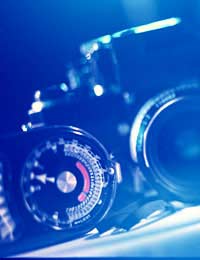The Inverse Square Law

As photographers and therefore visual artists, many people find themselves shying away from the more technical side of the discipline.
While there are large numbers of camera enthusiasts who take great pride in their knowledge of the ins and outs of every conceivable piece of photographic equipment, there are far more photographers who prefer simply to get on and take some photos. In order to become an expert in what you do, however, it is sadly necessary to have some grip on the ‘rules’ of photography.
Studio and flash lighting can be very difficult for the first-time experimenter. If you are used to shooting in natural light and making do with what is available then the new options that will open up to you in the studio may seem daunting. However, they are there to be harnessed and used for your benefit. In order to help you do this successfully, it is useful to know about the ‘inverse square law’.
Practicalities
The inverse square is commonplace in physics and mathematics; this article, of course, will concentrate not on the technicalities but on its practical application in photography. In very basic terms, when applied to lighting the inverse square law states that an object twice the distance from a light source will receive only a quarter of the light. Thus, if you had two objects, one of which is six feet from a light source and the other of which is twelve feet from it, the object twelve feet away will receive only a quarter of the light being received by the object six feet away.It is a common misconception that moving an object twice as far from the light source will halve the available light. Instead, the inverse square law explains why light ‘falloff’ occurs so rapidly. This can be seen very dramatically with on-camera flash; if you are using a non-directional light source then you will notice that objects in the foreground of your images will be much more highly exposed than those further back. This is because the light spreads and diffuses in three dimensions, rather than simply in a straight line away from the source.
F-stops
In the studio, the inverse square law can be very easily applied. Most studio lights have adjustable power settings, usually found on a panel on the back of the light. These settings tend to be expressed as fractions (one quarter, one half etc) which match f-stops on your camera. Thus, if you need to move your subject further back from the light source, you can increase the power of the light by adjusting the settings.Alternatively, it is also possible to compensate on your camera. Just as the light source can be adjusted in terms of f-stops, so too can the exposure being made. Widening the aperture by two f-stops will have the same effect as increasing the power from the light source by one quarter, and should therefore give you the same exposure as would be made if your subject was half the distance away from the light.
Business Energy With a Difference
If you are looking for business energy or need advanced solutions like remote energy monitoring, new supplies, downgrading or upgrading capacity, have a no obligation chat with Purely Energy.
To find our more get in touch here. or call 0161 521 3400.







